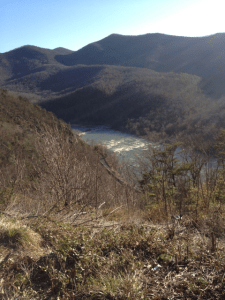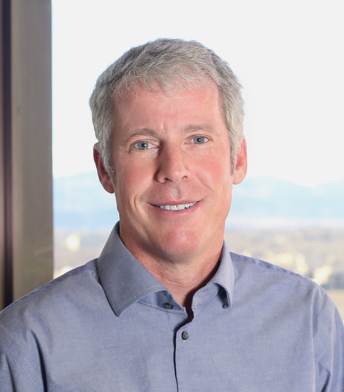Switch II Fission, the Sequel

Last night I drove to Lexington, VA where the Washington and Lee sustainability program was hosting a screening of Switch (to a smarter future). There was a decent crowd; perhaps 100 or more students, faculty and townspeople. It is an impressive documentary, with inside views of facilities that people rarely see. It also does a good job of putting energy choices into context and provides a consistent metric for comparison. According to Tinker’s calculations, the total energy used by an average person around the world is 20 million watt-hours per year. At each facility visited, he converts the output to the number of people whose energy needs it serves.
I wrote about the Switch documentary a few days ago in a post titled Switch Energy Project – faint praise for nuclear energy; I’m considering whether or not I should apologize to Scott Tinker and the show’s producers.
Here is my dilemma. Though the film is absolutely silent about nuclear energy for more than an hour (I timed it), when it finally does get around to mentioning the ‘N’ word it does so with favorable coverage that should leave the audience thinking hard about why they might have strong negative feelings about nuclear energy. Tinker, a Texas resident, visits Comanche Peak and talks with the plant manager about the strength and integrity of the containment building, the compact nature of the fuel and the reliability of the power.
He then visits France and talks about their successful switch from burning coal and oil for electricity to using nuclear energy to supply 80% of their electricity grid. He points out the speed with which that transition happened and he allows Areva’s Jacques Besnainou to describe how France has the cheapest electricity in the EU and one of the lowest carbon footprints as a result of the nuclear power plants that supply most of their electrical power.
Tinker visits the La Hague fuel recycling center and stands on top of the country’s nuclear waste storage facility. He seems utterly fascinated with the 20 euro cents coin that represents the annual quantity of each French citizen’s share of nuclear waste. The camera focuses on him flipping it around in his fingers; I am pretty sure that he favors nuclear energy with several “wows’ during his various visits. The film focuses on nuclear energy for about 10 minutes.
Switch intends to provide an overview of all energy sources. Its stated purpose is to illustrate the scale of the challenge associated with supplying the world with energy and the hurdles associated with making any major shifts in direction. That focus requires time allotments that do not leave a lot of room for information about the ways that nuclear energy can make a real difference. That is why I believe there is a huge opportunity for a timely sequel titled Switch II Fission: A Smarter Future that is Already Available.
I have a few quibbles about the way that nuclear energy is portrayed, especially with regard to the snide, unnecessary comment about it being hard to handle. I noticed that all of the reactors chosen for starring roles in the film were plants that use iconic hyperbolic cooling towers that often stimulate subliminal memories of Three Mile Island and mushroom clouds. I did not think too much about that choice as I watched the film. After all, Comanche Peak is close to Tinker’s home and most of France’s reactors have cooling towers.
However, while researching for this blog, I found the below video on the Switchenergyproject.com site. It shows that the film editors could have featured reactors that are substantially less imposing and do not carry the iconic message. During travels, the film crew had captured some impressive footage at the South Texas Project, a two unit facility that uses a lake for cooling.
Aside: One other quibble that I have with the way that the Switch writers treat nuclear energy is the way that they blame Fukushima for the (hopefully temporary) abandonment of the expansion that would have resulted in the addition of units 3 and 4. There is a relationship, but it is far more complicated than the notion that it was fear or risk that directly led to the project being cancelled (for now). The tie between STP 3 and 4 and Fukushima is more financial than fear. After the permanent destruction of at least four of its operating nuclear units, and the long term shutdown of the rest of them, Tepco, a major investor in STP 3 & 4, lost all of the money it would have invested in the project. End Aside.
While waiting outside the Stackhouse Theater for another group to vacate so the screening could begin, I struck up a conversation with a gentleman who turned out to be in charge of Washington and Lee’s energy improvement programs. He has been working in the facilities department at the University for 38 years. We enjoyed talking about energy. I gave him my card and hope that he visits Atomic Insights; he could make a valuable contribution to our discussions.
I also sent the student organizer a thank you note for allowing the public to attend the screening. In that case, I am hoping for a follow up on my offer to come and talk to the Student Environmental Action League (SEAL) about B&W mPower’s local – to them – project to develop new nuclear power plants that can assist in a switch to a smarter energy future.
Washington and Lee has an active sustainability group that might provide some serious synergy in efforts to develop Virginia as the leading energy producer on the east coast.
PS – By the Tinker measure of 20,000,000 watt-hours per person, the Kewaunee plant that Dominion plans to destroy produces the equivalent of 225,000 people’s annual energy needs without any greenhouse gases.



Thanks for the review Rod. After a quick visit to the project’s web page, I was pleased to see that there is a screening already scheduled in my area next month and that there are a lot of screenings scheduled nationwide over the next several months. For a complete list of the screenings, visit http://www.switchenergyproject.com/screenings.php.
This reminds me a lot of “The Watt” project produced by a group called Focus the Nation.
Though I’ve not read that ebook (doesn’t seem to be published yet), their site doesn’t give much attention to nuclear and when it does, it’s tempered with the phrase ‘there are no silver bulletts’. Many of these energy awareness groups use that phrase as if that pre-emptively sets the premise that nuclear cannot be the whole answer. It’s as if they want to set that tone because their afraid of what they may discover about nuclear: it’s the answer, and almost all other energy sources aimed at staving off carbon emissions are a drastic waste of time and effort. A lot of people feel extremely uncomfortable with that position.
A lot of people feel extremely uncomfortable with that position.
Said in a more cynical way, there are a lot of people who stand to lose a lot of money when nuclear takes its natural share of the energy markets.
This new anti-nuke fret flare-up in Japan (and near to an extent here via media as NYT) based on the supposedly rat-caused loss of rod cooling water at Fukushima, like the Hanford leak incident, constantly cries out for a ready nuclear truth squad at the ready to jump into YouTube or better the mass media (by ringing their phones off the hook for nuclear consultant balance) to quell the public jitters and re-kindled hysteria with fact and perspective.
James Greenidge
Queens NY
Like all your sharp perceptive points! I’ll add to the closing remarks of “so what’ll replace these plants when they’re decommissioned (since we’re stuck with them till then); coal or natural gas?” More advanced nuclear never entered his mind!
James Greenidge
Queens NY
It’s good to see the addendum to the SWITCH review. In the Carolinas, two states with significant nuclear expertise and dedication, we have used SWITCH as a good education tool. Over the past two months we have had well over 1,000 people on more than a dozen education campuses watch the documentary, and we have had panels of energy professionals discuss the video with the audience. In the Carolinas we have been able to generate useful discussion about energy using SWITCH. It’s been a big hit. I feel that the nuclear wrap-up for the documentary does indeed strengthen the case for nuclear. Kudos to the ARCOS Film folks for a job well done on all segments of the documentary.